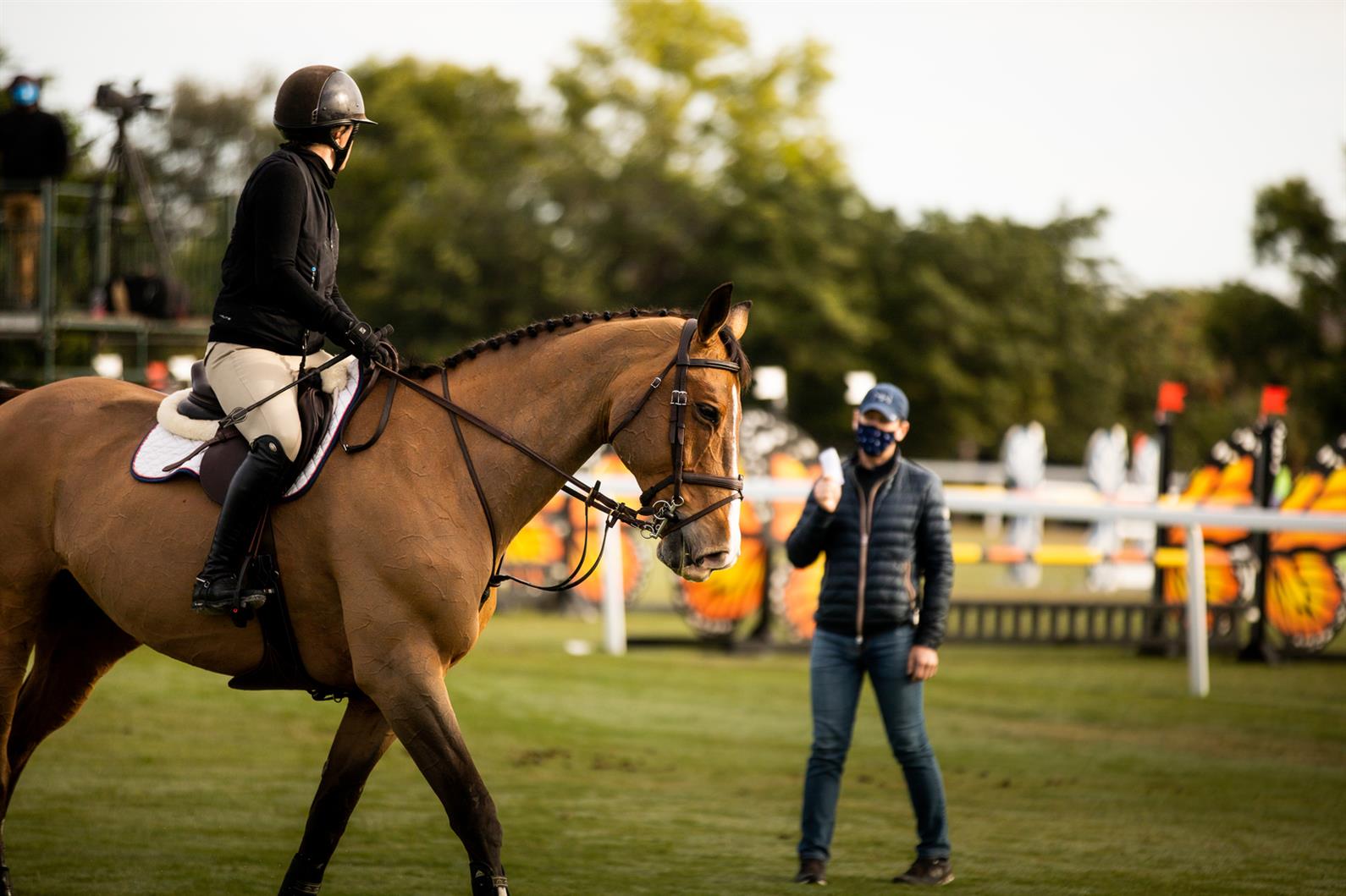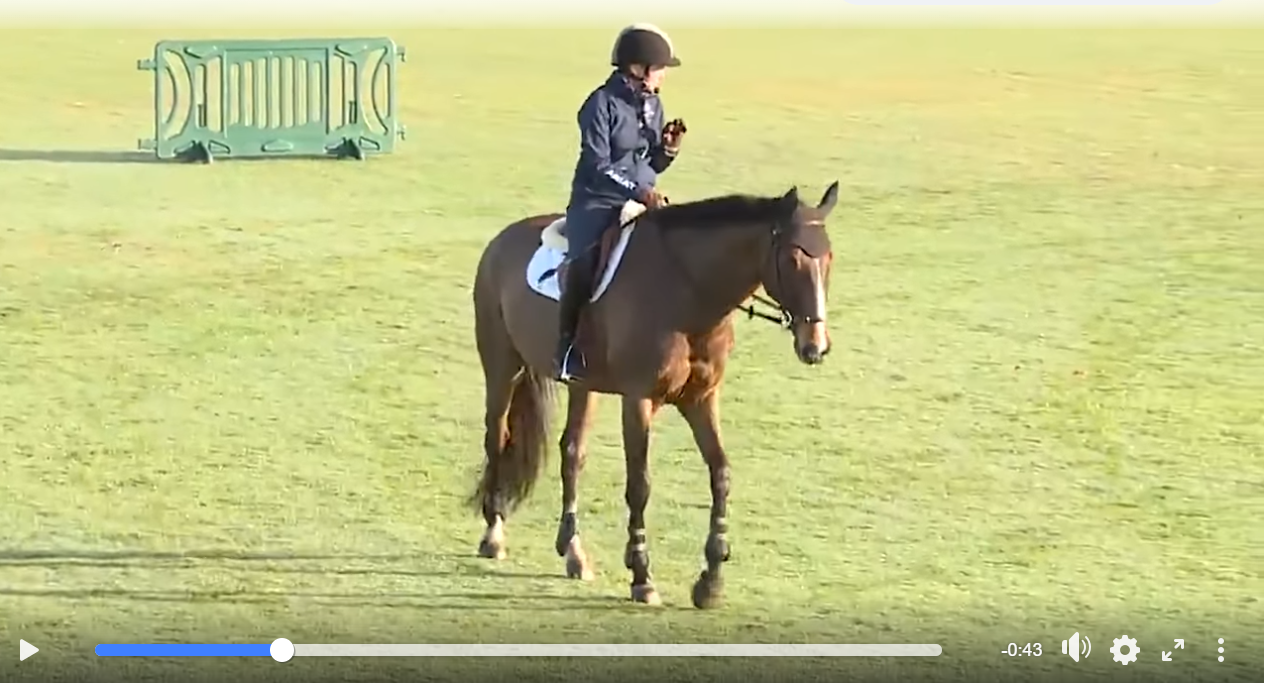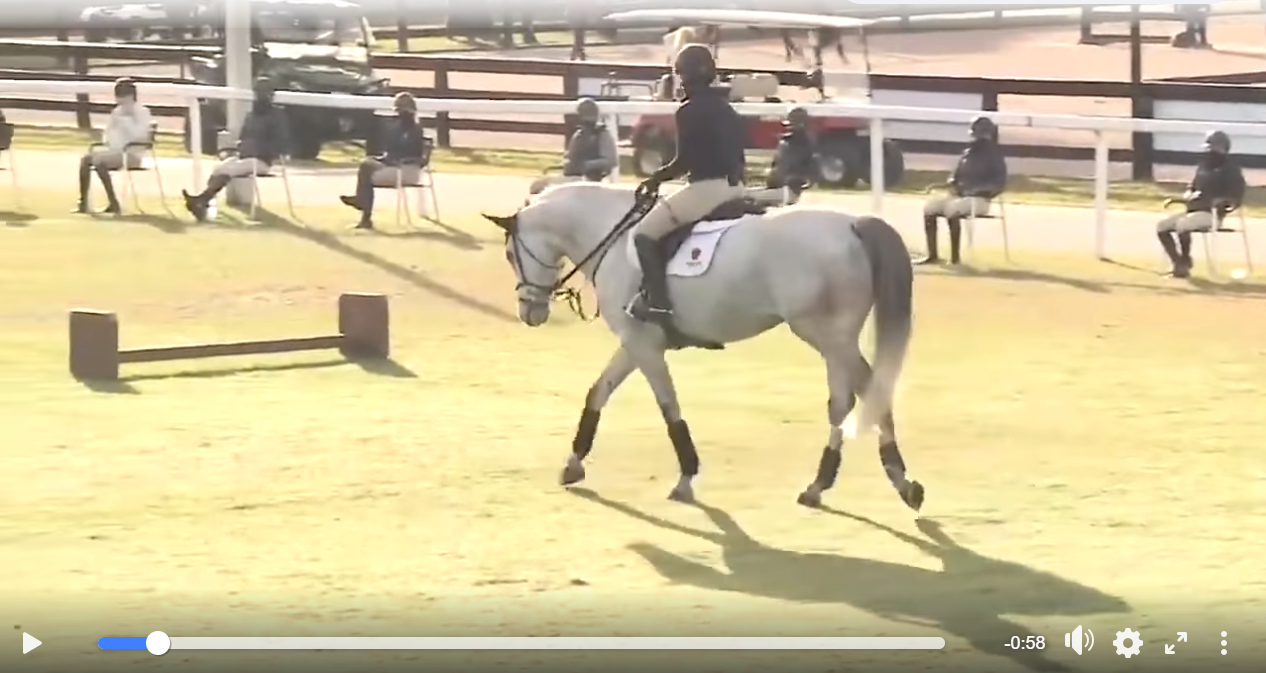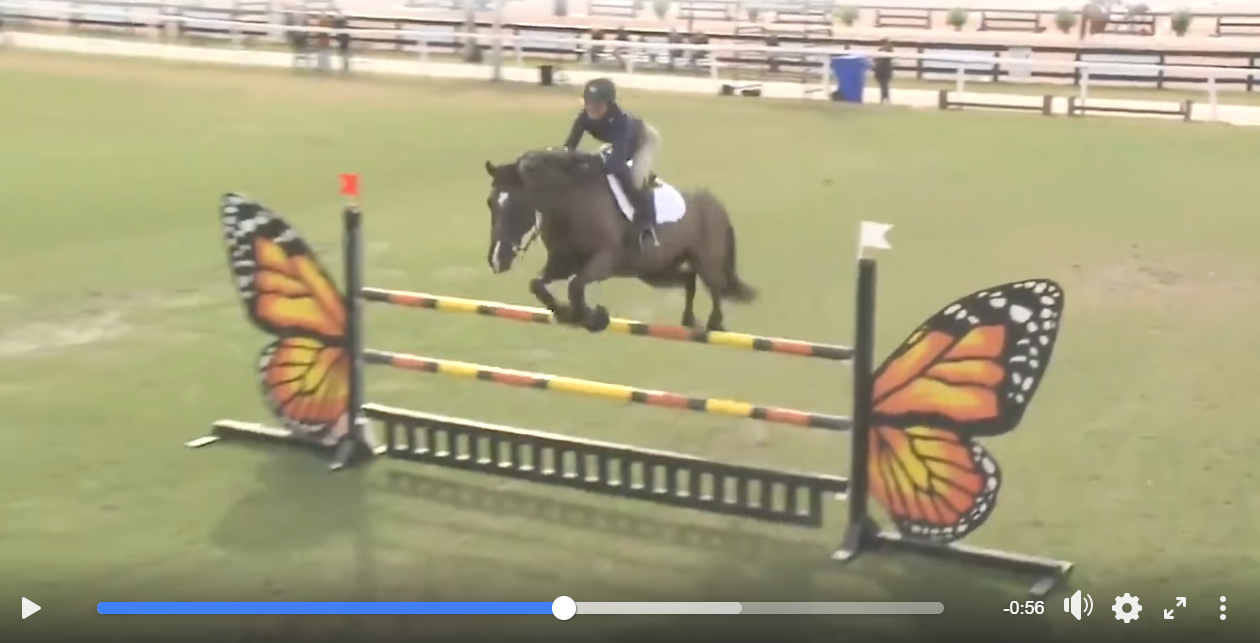Wellington, Fla. – Inside leg to outside rein. A straight line from elbow to bit. Weight in your heels, open shoulders, and eyes up. Participants in the USEF Horsemastership Training Session in Wellington, Fla., heard many of these bedrock equestrian principles during their three days of instruction with Olympians Anne Kursinski, Beezie Madden, and McLain Ward. It was a reminder that while these accomplished athletes have ample wisdom to impart on the finer points of succeeding in elite show jumping competition, the basics are basics for a reason, and it’s always important to reinforce the foundation.

For the mounted sessions, Anne Kursinski led the group through flatwork on day one. Beezie Madden gave a lesson focused on gymnastic exercises on the second day. The clinic concluded with McLain Ward coaching each athlete through a mock competitive experience, from show-day warmup through a full 1.30m course.
Watch the 2021 Horsemastership Clinic Series from Wellington here.
1. Riding Is a Conversation with Your Horse
Kursinski led the group through a flatwork session that incorporated dressage principles to build a horse’s fitness and rideability. Through lateral work, extension and collection, and riding without stirrups, the riders honed their skills in effective communication with their horses while building athleticism for the show ring.
“There’s got to be clear communication,” Kursinski told the riders. “When they do it right, there’s a lightness. I’m going to keep asking until they give it to me, whether that’s move off the leg or go forward or accept the contact. But as soon as they yield and give, you have to say, ‘yes, that’s what I’m looking for.’ When I’m riding I’m having a conversation with my horse through my aids. It’s a lightness, it’s a heartbeat, it’s a breathing, by releasing and relaxing my aids.”
2. Better Flatwork Makes Better Jumpers
“To me, basic dressage is so important for any horse, no matter what age,” said Kursinski. “They’ve got to first learn the rideability for jumping, turning, lengthening, and shortening. It’s like you going to the gym or doing yoga or Pilates to get stronger. Your basic dressage is like your horse going to the gym.”
Throughout the session, Kursinski frequently referred back to the basic tenets of riding.
“Straightness is really inside leg to outside rein,” said Kursinski, cautioning her students not to try to pull the horse’s head in, but instead to encourage connection by riding leg to hand. “When he does bend and give, get a little light on your inside rein. Not that you pull them to the outside, but there’s a lightness on your inside rein.”
3. Don’t Abandon Your Outside Rein
For the second day of mounted instruction, Madden set up a series of gymnastic exercises that included adjusting stride length through a line of cavaletti, to several uses of a grid of alternatingly angled verticals, and finally working through a short course that included a liverpool and a water jump. She demonstrated the exercises with a horse she is currently training while talking the athletes through her process before they returned to the ring with their own horses.
“Basically I want inside leg on to the outside rein, and just a slight bend to the right,” Madden said as she warmed up her horse, echoing Kursinski’s instructions from the previous day. “I don’t really care where his head is in the beginning. I’m not going to seesaw his head down. I’m just going to work inside leg to outside rein.”
The first iteration of the grid exercise involved circling in alternating directions in between the jumps, and the second was to ride them on a serpentine, approaching each fence straight to its angle and aiming for six strides on a bend in between them.
“The important part of this exercise is using both reins,” said Madden. “Some people abandon the outside rein here; keep that rein. Bend, and then hold him out with the outside rein.”
4. Set Your Horse up for Success at the Water
Finally, Madden rode the grid on a straight line, jumping each fence at an angle, and built on the grid to introduce the horses to the Liverpool and the water.
“I want to do enough to open him up to the water so that it’s fair to him. I don’t want to just attack the water,” said Madden. “When introducing the water, I like to put it into a pattern. If you just put him into a canter and attack the water, it’s going to surprise him more.”
After successfully clearing the water on both leads, Madden moved on.
“I think if they do it well, you don’t need to repeat it and kill it,” she said. “We want them to stay a little impressed…You always want to keep them jumping water well and if you just repeat it and repeat it, they’re going to get casual.”
5. You’re Always Training Your Horse; Be Careful What You’re Training Them
Madden encouraged the athletes to always think of themselves as trainers when working with their horses.
“Every time you’re on a horse, you’re training them. You have to be careful what you’re training them,” she said. “This is a big step you’re making. You’re going from using a horse to be a learning tool and teaching you, to you training the horse. It’s a funny step. You’ve got to have it in your head that you’re not just out there to improve yourself, but to train your horse, too. So you have to be firm and consistent. [Your horse] needs to have confidence in you and they need to respect you.”
6. Keep it Simple in the Warm Up Ring
The final riding session of the clinic mimicked a show-day schedule, with Ward instructing the riders through their warmup, coaching them through a round, and providing feedback at the end. He regularly reminded them to be patient, stay calm, and trust their riding skills.
“Your warmup is about getting prepared for what the test is in the ring,” said Ward. “Warmup before competition isn’t a full half-hour flatting or super technical. Keep it simple to accomplish what you need. You need your horse to be forward. You need your horse to be balanced and come back to you. You want them to get loosened up; it’s a warmup.”
7. Less is More in the Saddle
“If he’s cantering nicely, don’t do anything,” said Ward. “Everything you do in one direction, you’re going to have to do in the other. I use the pendulum analogy; you’re swinging too far from one side to the other. If you chuck your arms away, you’ll have to regroup all that. If you lean to far one way, you’ve got to go back the other way twice as much.
“Stay in the middle. Stay as still as possible,” Ward continued. “Get the horse moving up underneath you and carrying you, and then you sit chilly. You stay in the middle. Keep your torso [over the horse’s center of gravity]. Keep your lower leg down, weight in your heel, and keep a nice connection with the mouth and a short rein. Less movement.
8. Stay Balanced in the Center of Gravity
Riders need a solid, balanced position in the tack to successfully ride in the quiet manner Ward described, and he didn’t let position flaws slide, particularly when it came to keeping a tall, open upper body and maintaining a solid base of support through the lower leg.
“You can sit up tall and still be soft,” said Ward. “Stay tall, connect the lower leg through a light, changing seat, adjusting your seat to an open chest and eyes up.
“For me, I picture staying still and the horse’s withers coming up and hitting me in the chest [over the jump],” said Ward. “My lower leg is my base of support. That’s my anchor. I keep my torso out of the way and I envision the wither coming up to me; I never go down to meet it. The torso stays over the center of gravity. Picture giving someone a piggyback ride. If they’re leaning forward or back or to the side, it’s going to be hard to run. This is the same thing.”
Ward reiterated the importance of staying balanced and quiet in the saddle, no matter what your horse or the show environment throws at you.
“If the horse wants to twist a little, don’t twist with him,” Ward advised. “Hold your position in the center and the horse will come more your way.
“Remember Rothchild?” Ward said, referencing his 2014 FEI World Equestrian Games mount. “He was a terrible jumper. He was very careful and won a lot of grand prixes. But the worst thing you could do with Rothchild is to follow his technique. Over the years I tried to hold my position the best I could, always in the middle, in the center of gravity, and that horse became a better jumper later in his life because he came my way. Not classic, but better!”
9. Every Rider Benefits from Knowledgeable Eyes on the Ground
Having a coach who knows your skill level and can remind you about your position is essential for riders of all levels, said Ward.
“It’s so important to have somebody who is aware of your balance, your position, your core strength,” said Ward. “You need someone to say, ‘Hey, you’re a little bit ahead. Your lower leg is sliding back.’ It’s very hard to keep that discipline ourselves if someone’s not on that. It is a constant battle. Don’t let it slip, because it will limit your results.”
Watch the full 2021 USEF Horsemastership Training Session on USEF Network.
Visit USA Jumping on Facebook and Instagram US Equestrian on Twitter and Instagram, and USEF Network on Facebook, Twitter, and Instagram.
The USEF International High Performance Programs are generously supported by the USET Foundation, USOPC, and USEF sponsors and members.





